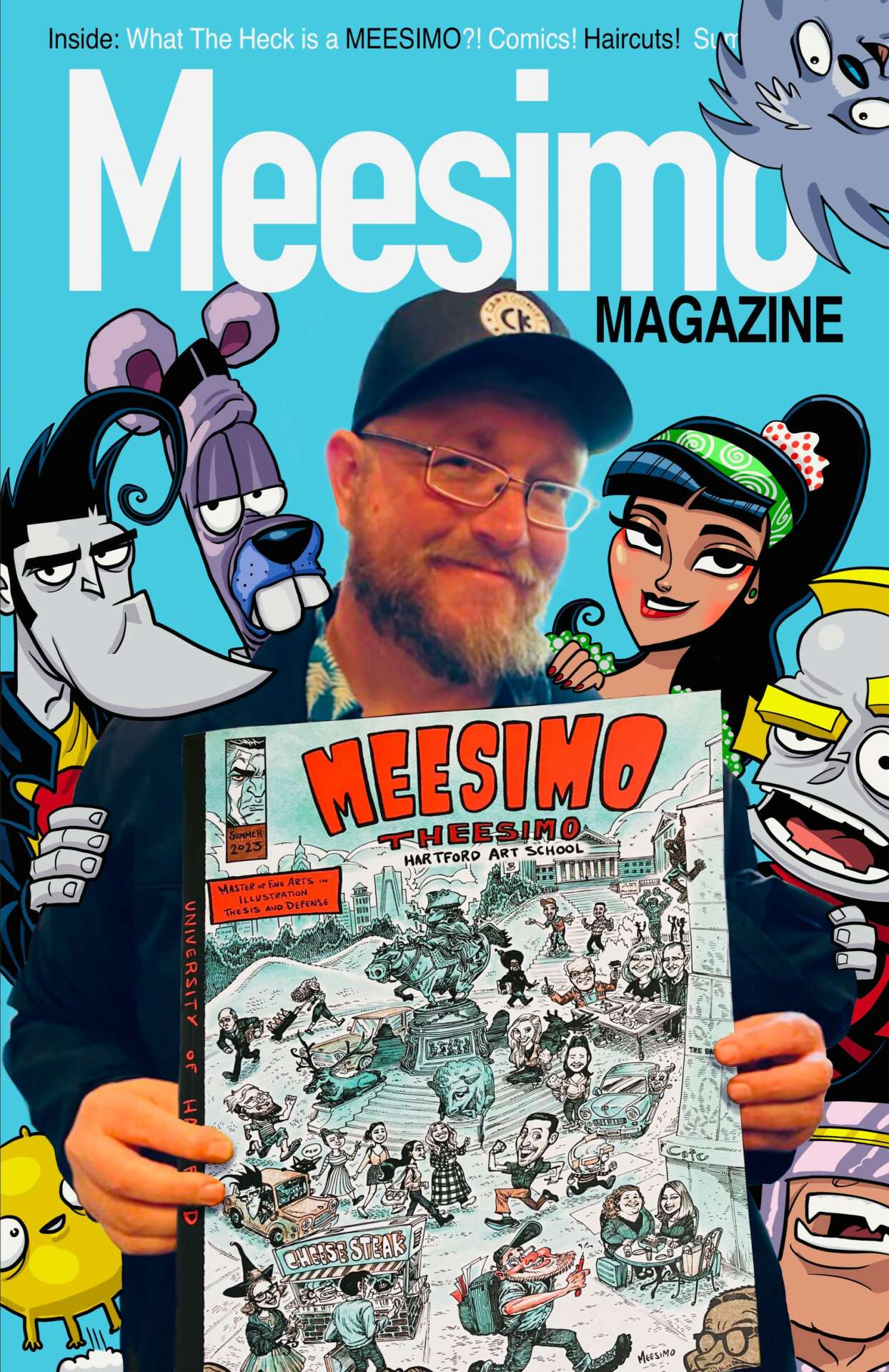We caught up with the brilliant and insightful Christian Meesey a few weeks ago and have shared our conversation below.
Hi Christian, thanks for joining us today. We’d love to hear about the best boss, mentor, or leader you’ve ever worked with.
The best boss I ever had was master caricaturist and cartoonist Tom Richmond. Even before he was drawing for MAD Magazine, he was a masterful teacher, and he taught all of us artists that worked for him how to level up if we were willing to work hard. After high school, I wanted to be a comic book artist, but my work was unrefined. I was making and selling homemade zines but wasn’t ready for prime time. My comic art showed enough promise that Richmond hired me to draw caricatures with a handful of others, including the great Ed Steckley, at his new Six Flags St. Louis caricature stand. I was pretty rough around the edges when I first started. The combination of Richmond and Steckley’s teaching and the long hours spent drawing live caricatures for a few consecutive summers led to me growing as an artist faster than ever. Richmond instilled the truism that “all artists have 10,000 bad drawings that they need to get out of their system before they can get to the consistently good drawings.” He also was a great boss because, as an artist himself, he knew where we were coming from regarding things like scheduling, getting the right supplies, delegating responsibilities, and chemistry between artists. Tom Richmond was the best boss and an excellent mentor who has become a great friend.
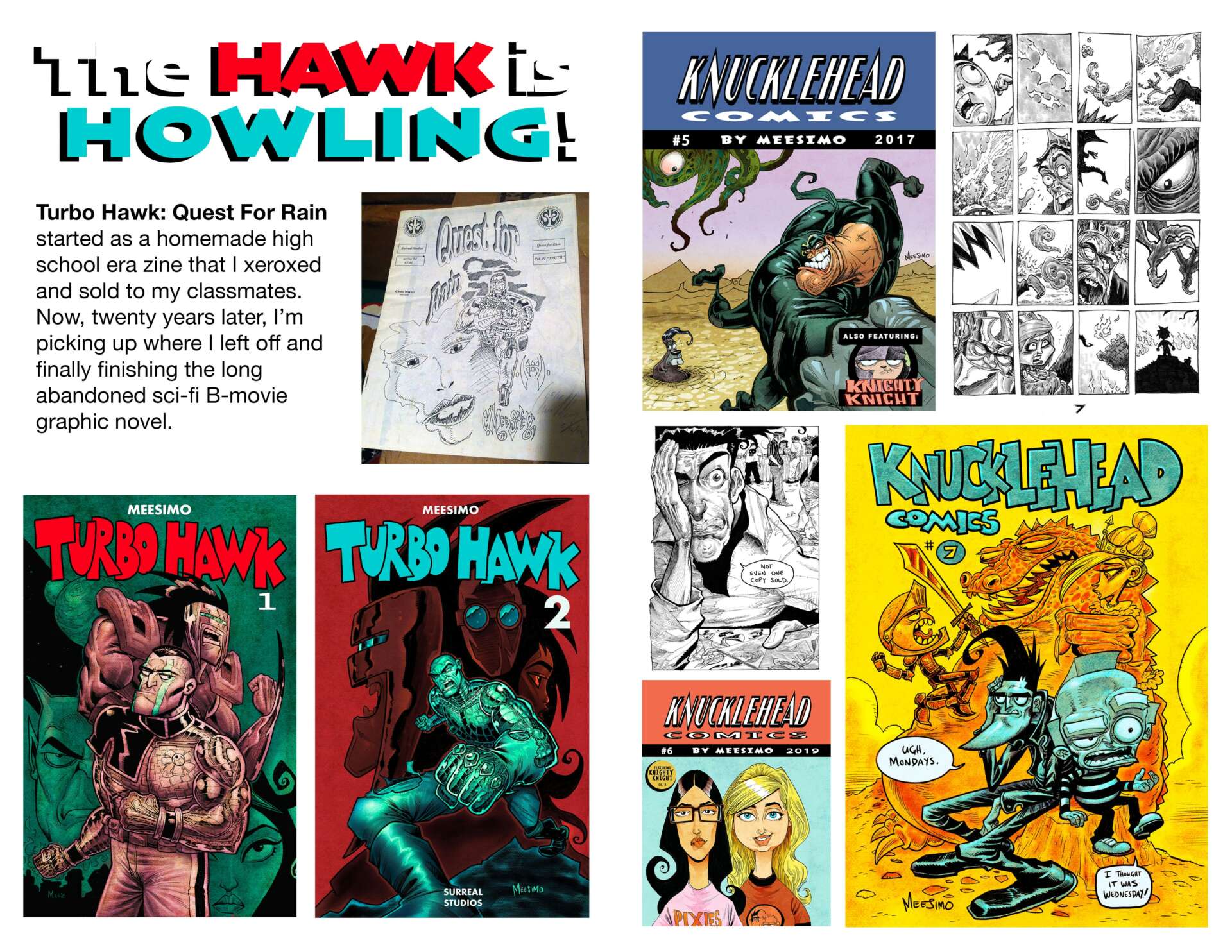
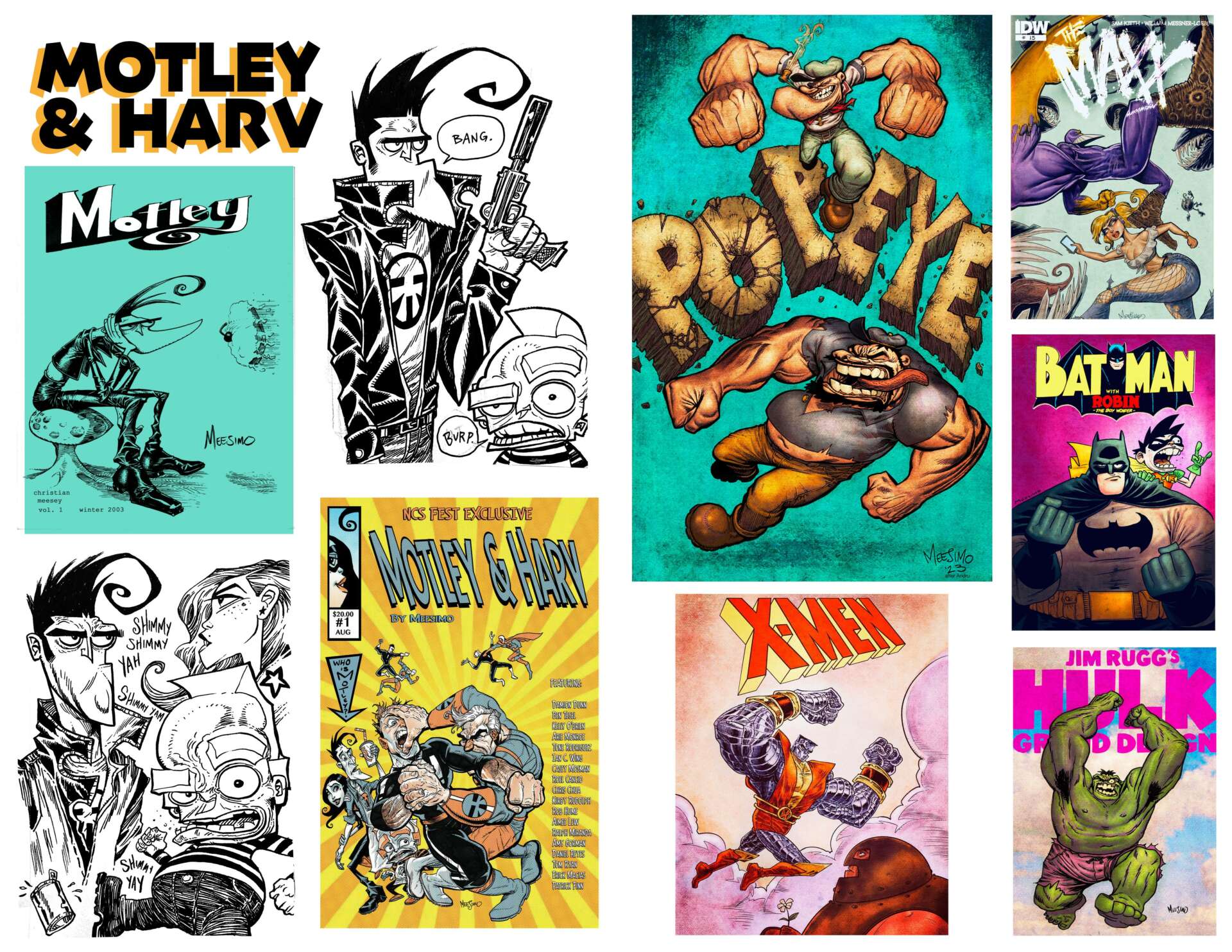
Awesome – so before we get into the rest of our questions, can you briefly introduce yourself to our readers.
My work contains inspiration from a wide variety of artists and art styles. A Smithsonian Book of Comic Book Comics started me on a lifelong path to wanting to become a cartoonist and sparked my love for the comics and illustration fields. A family friend gave me a copy as a child, and I poured over it for years. I was captivated and inspired by classic cartoonists from the book, like Wallace “Wally” Wood, Jack Davis, Basil Wolverton, Will Eisner, Carl Barks, and Harvey Kurtzman. I went from reading and studying these comics and others, such as Frank Miller’s Daredevil, Neil Gaiman’s Sandman, Mike Mignola’s Hellboy, Daniel Clowes’ Eightball, Julie Doucet’s Dirty Plotte, Jim Lee’s X-Men, Todd McFarlane’s Spawn, J. O’Barr’s The Crow, and many others, to drawing my comics. I wrote and illustrated my zines in high school and sold them to my classmates and at the local record store. I made some money, but not enough to pay the bills. I needed a “real” job. Live caricature and the onsite teaching of my first mentor Tom Richmond led me and my art to the next level. I got work illustrating articles and eventually covers for some weekly news magazines. I earned a BFA in computer animation at an international university in Miami, Florida. I exhibited paintings and drawings in the early days of Wynwood and Art Basel. I published a few comics and had multiple shows in South Florida before I couldn’t bare it anymore and answered the call to move to the opposite coast. California was the place I wanted to be. Swimming pools and animation studios. I returned to live caricature as my day job but also worked as a character designer and storyboard artist for multiple studios and productions.
I launched some new comics. Knucklehead was my one-person-anthology. Motley and Harv was a continuation of my low-brow fine art gallery days. Nuclear Neal was my ode to classic cartoonists from A Smithsonian Book of Comic Book Comics. My current and upcoming comics output are all culminations from that book and my experiences drawing live caricatures around the globe.
I recently achieved my MFA in Illustration from the Hartford Art School under my latest mentor, Hall of Fame Illustrator C.F. Payne. This program more acutely adds the influence of golden age illustrators like Howard Pyle, N.C. Wyeth, Norman Rockwell, Elizabeth Shippen Green, Thomas Blackshear, and others to my inspiration repertoire.
I aspire to create comics and editorial illustration that reflects all of these influences filtered through my lens.
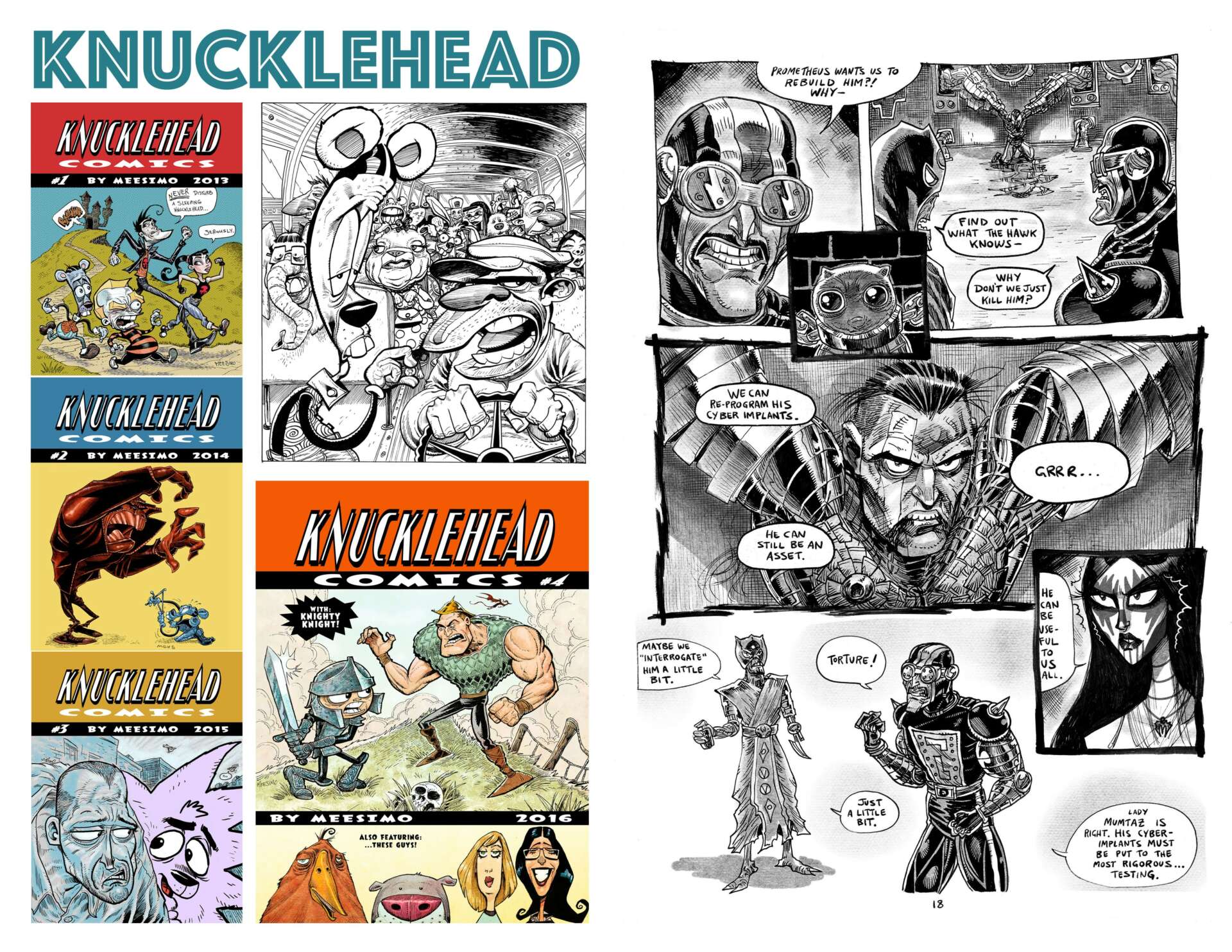
Let’s talk about resilience next – do you have a story you can share with us?
Resilience in art is essential. As a young artist, I dreamed of creating an extraordinary sci-fi graphic novel of my characters. I wrote and illustrated my first finished comic, Quest For Rain, as a sophomore in high school. I stayed up all night, sometimes printing copies of it at Kinko’s. I hounded my classmates and sold them copies of each new 12-page chapter as I finished them. I sent it to publishers but received rejection after rejection. After high school, I lost steam as I became distracted by other pursuits. My drawing style evolved away from the overly-serious sci-fi of Quest For Rain and veered toward MAD magazine. I abandoned my epic. Over the years, I produced dozens of other comics, but I always yearned to return to Quest For Rain.
During the pandemic lockdown, I decided to dive back into my unfinished Quest For Rain comic pages. I had self-published around 48 pages of my intended graphic novel, but I had dozens of other pages in various stages of completion. I continued working on Quest For Rain, now titled TURBO HAWK: Quest For Rain, through my recently completed MFA Thesis. As of this writing, I have published two complete issues of TURBO HAWK: Quest For Rain and am poised to finish this comic finally I started over twenty years ago. Resilience is worthwhile.

Is there mission driving your creative journey?
My goal with my art is to bring joy to my fellow brothers and sisters around the world. I had a crisis of faith regarding my commitment to art and cartooning as a career. Why am I spending my life on something so trivial? I found my answer many times over. I found it in a presentation by the great Pixar storyteller Andrew Stanton. He spoke of how people have shared how his stories have touched them emotionally and helped them through difficult times by putting a smile on their faces. I found it in the work of master storyteller Brian McDonald. In his evergreen writing manual Invisible Ink and the follow-up The Golden Theme, he speaks of how the best stories contain the wisdom that “we are all the same.” I found it in my customers who travel from many miles away and wait in lines for hours to be drawn to share a laugh and create a memory. I strive to bring people joy, even for a fleeting moment. Frivolity is not trivial when someone is having a challenging time. Frivolity and joy are essential.
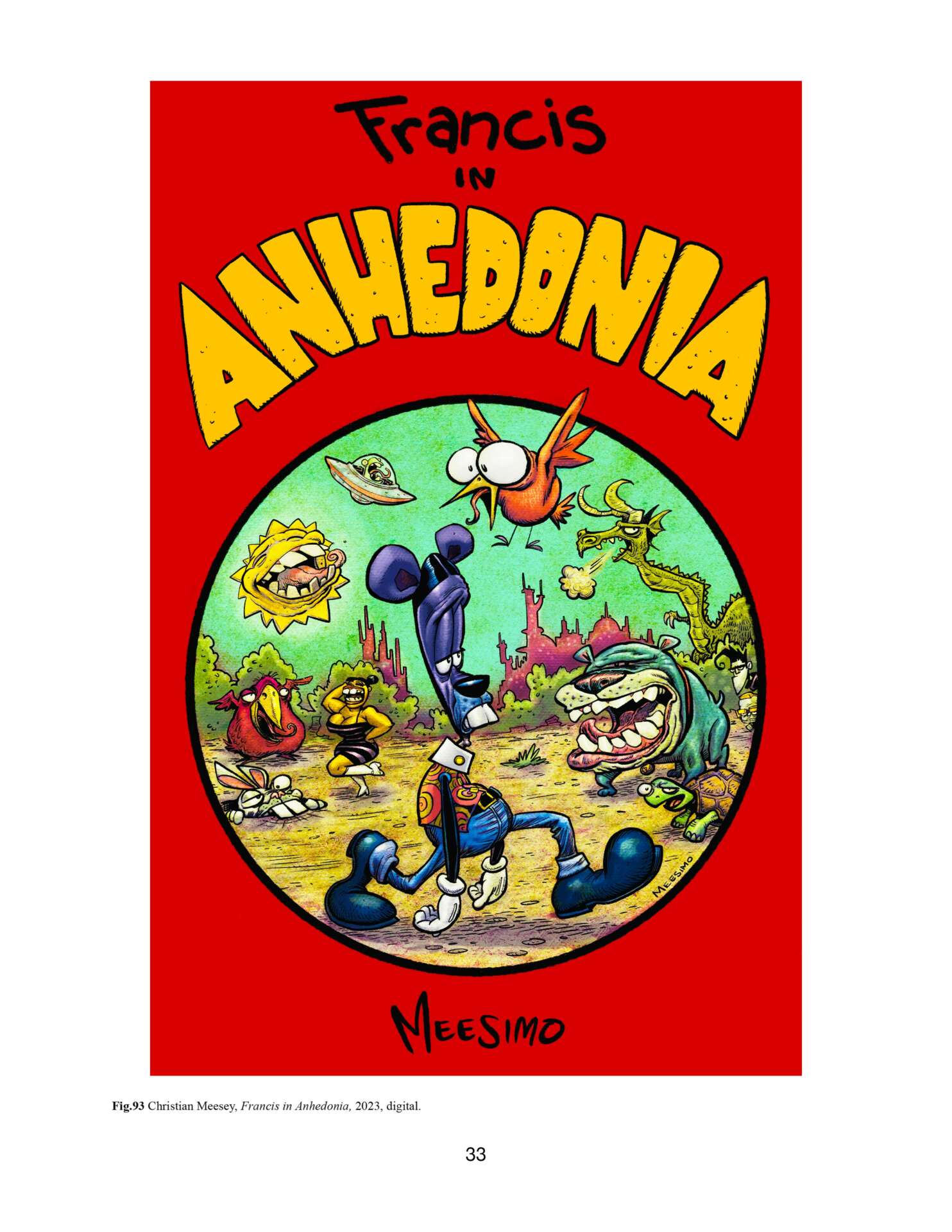
Contact Info:
- Website: www.meesimo.com
- Instagram: @meesimo
Image Credits
Christian Meesey


